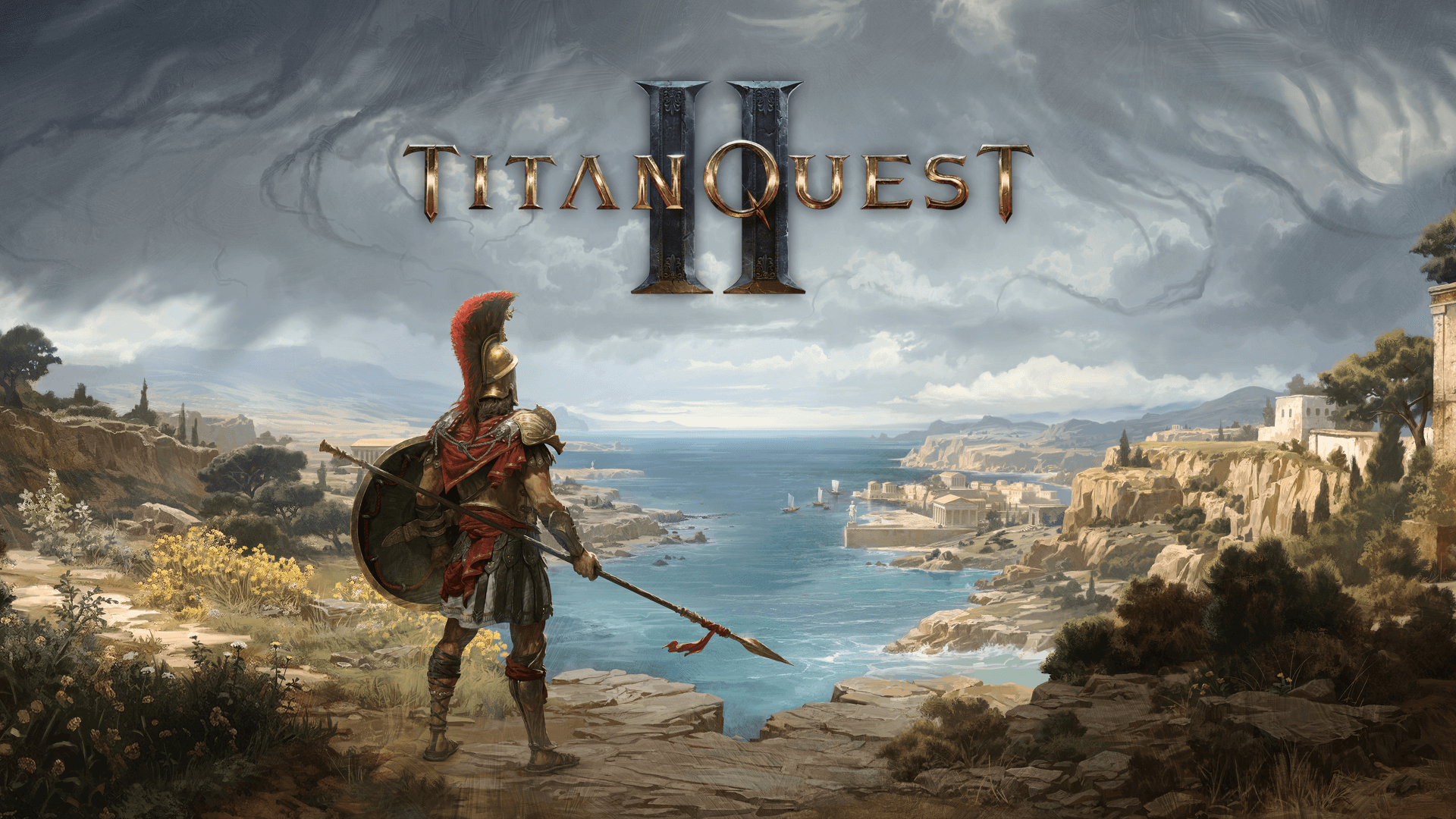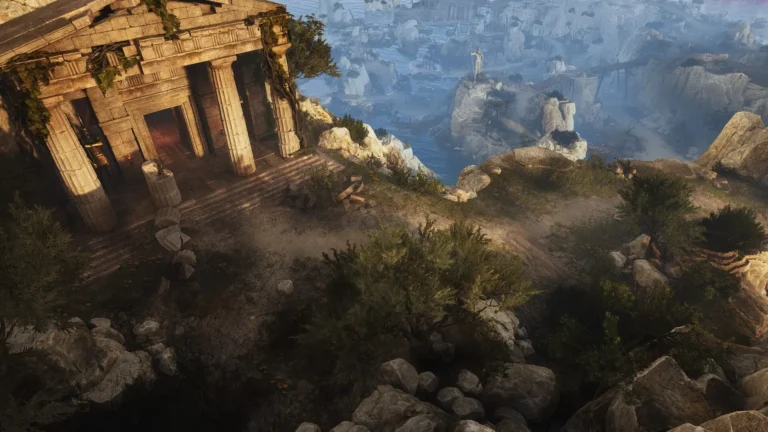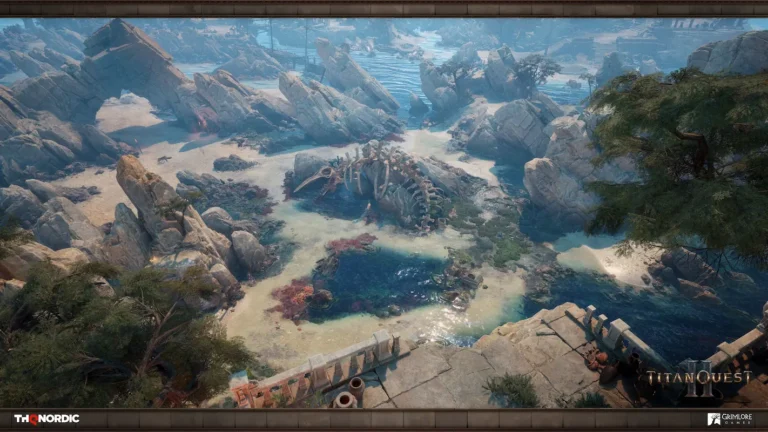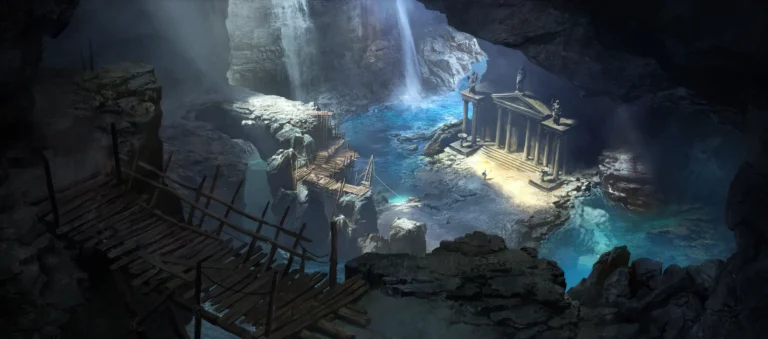Welcome to the ultimate guide to mastering the game mechanics of Titan Quest 2! This resource dives into attributes, damage types, ailments, resistances, armor types, and offensive/defensive mechanics to help you dominate the battlefield. Whether you’re a seasoned adventurer or new to the world of Titan Quest, this guide provides the knowledge to craft a powerful character.
Main Attributes
Attributes in Titan Quest 2 are the cornerstone of your character’s power, shaping secondary attributes, gear choices, and combat styles. Below are the four main attributes and their connections to secondary attributes.
- Knowledge: Enhances Cunning and Resolve. Ideal for magical builds.
- Might: Boosts Resolve and Fitness. Perfect for heavy-hitting warriors.
- Agility: Improves Fitness and Cunning. Suited for nimble, dodge-focused characters.
- Vigor: Contributes to Fitness, Cunning, and Resolve, while increasing Health Points. A versatile choice for hybrid builds.
Secondary Attributes
Secondary attributes derive from main attributes and specialize in specific damage types:
- Cunning: Boosts Poison and Lightning damage.
- Resolve: Enhances Fire and Cold damage.
- Fitness: Increases Strike and Pierce damage.
Attribute-Specific Gear and Playstyles
While both Titan Quest 1 and Titan Quest 2 are designed for a broad audience, achieving synergy between your gear and playstyle is essential. Understanding your preferred defensive layering is as critical as selecting the types of attacks or spells you wish to execute. Although players can mix and match gear to suit their needs, choosing the right equipment is vital, as attribute points can be refunded, but it is relatively costly. Be sure to put forethought into defining your playstyle.
- Knowledge: For Magos Armor (+X to Energy Barrier) or Plated Magos Armor (+Y to Energy Barrier, where Y > X) and wield magical weapons for spellcasting.
- Might: For Heavy Armor (+% to Glancing) or Ornate Armor provides Thermic Resistance (Fire and Cold) and heavy weapons for raw power.
- Agility: For Light Armor (+#% increased dodge recovery rate) or Medium Armor (#% increased dodge cooldown rate) and fast weapons for a swift, evasive playstyle.
- Vigor: Increases Health Points, essential for survivability across all builds.
Damage Types
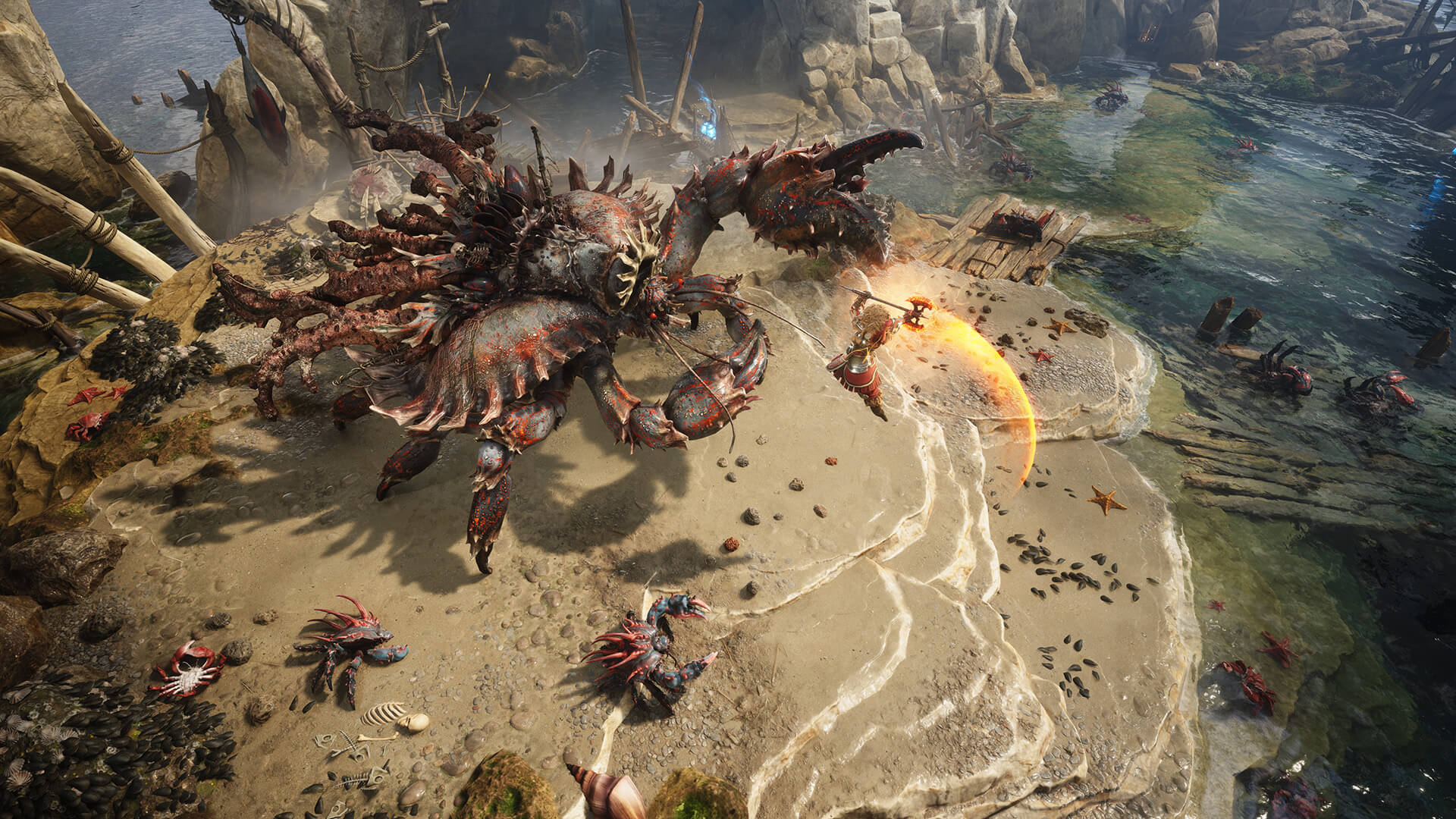
Understanding damage types is crucial for optimizing your build and countering enemies. Damage in Titan Quest 2 is divided into three main categories—Physical, Thermic, and Natural—each with distinct effects. Each has both a direct damage component and a Damage over Time variant. As noted earlier in the Attributes section, allocating all your points to Might is ideal for scaling Fire and Cold damage, but it would make scaling Lightning damage extremely challenging.
Note: Titan Quest 1 players will not see OA (Offensive Ability) in Titan Quest 2. Damage is now based on individual stats across a multitude of independent mechanics.
Physical Damage
- Strike: Causes Staggered, reducing enemy movement and attack speed.
- Pierce: Inflicts Bleeding, a Damage over Time ailment.
Thermic Damage
Thermic damage encompasses both Cold and Fire damage types, mitigated by Thermic Resistance.
- Cold: Can apply Chilled (Damage over Time and Slow).
- Fire: Can cause Burning (Damage over Time).
Natural Damage
- Lightning: Can inflict Shock (Damage over Time) and Disrupted (Mini-Stun).
- Poison: Can apply Plagued (Damage over Time).
Non-Attribute Specific Scalers
These damage types scale with your highest attribute, offering flexibility for hybrid builds:
- Vitality: Provides 10% Life Steal. Shadow Damage is the Damage over Time variant.
- Spirit: With Holy Damage as the Damage over Time variant. Minimal information is available, and this damage type will be updated further in the future.
- Energy Drain: A unique damage type that does not appear to be tied to other categories at this point in the early access.
Ailments
Ailments are powerful effects that modify damage or debilitate enemies. They can deal True Damage (Unmitigable) and ignore resistances to the corresponding type, and have unique stacking mechanics that can be increased through duration, power, and stacks.
Damaging Ailments
- Bleeding, Burning, Plagued, Chilled, Shocked, Shadow, and Holy: Deal True Damage over time and any other respective ailments listed above.
Non-Damaging Ailments
- Staggered: Reduces move and attack speed.
- Weakened: Lowers a unit’s damage output.
- Disrupted: Applies a mini-stun, interrupting actions and breaking channeling.
Ailment Mechanics
- Stacking: Ailments have a default maximum stack count of 10, with a hard cap of 20.
- Application Chance: Higher damage increases ailment application chance against resistant enemies. Over 100% chance allows additional stacks (e.g., 150+% = potential for two stacks, 250+% = up to three stacks). Resistance to these ailments decreases the chance. A 50% application chance against a 60% resistant enemy would mean no application of the ailment. If reversed, it would mean a 10% chance to apply said ailment.
- Scaling: Ailments scale with ailment power, duration, and stacks. They cannot critically strike by default, nor can the damage per tic be reduced.
Defensive Mechanics
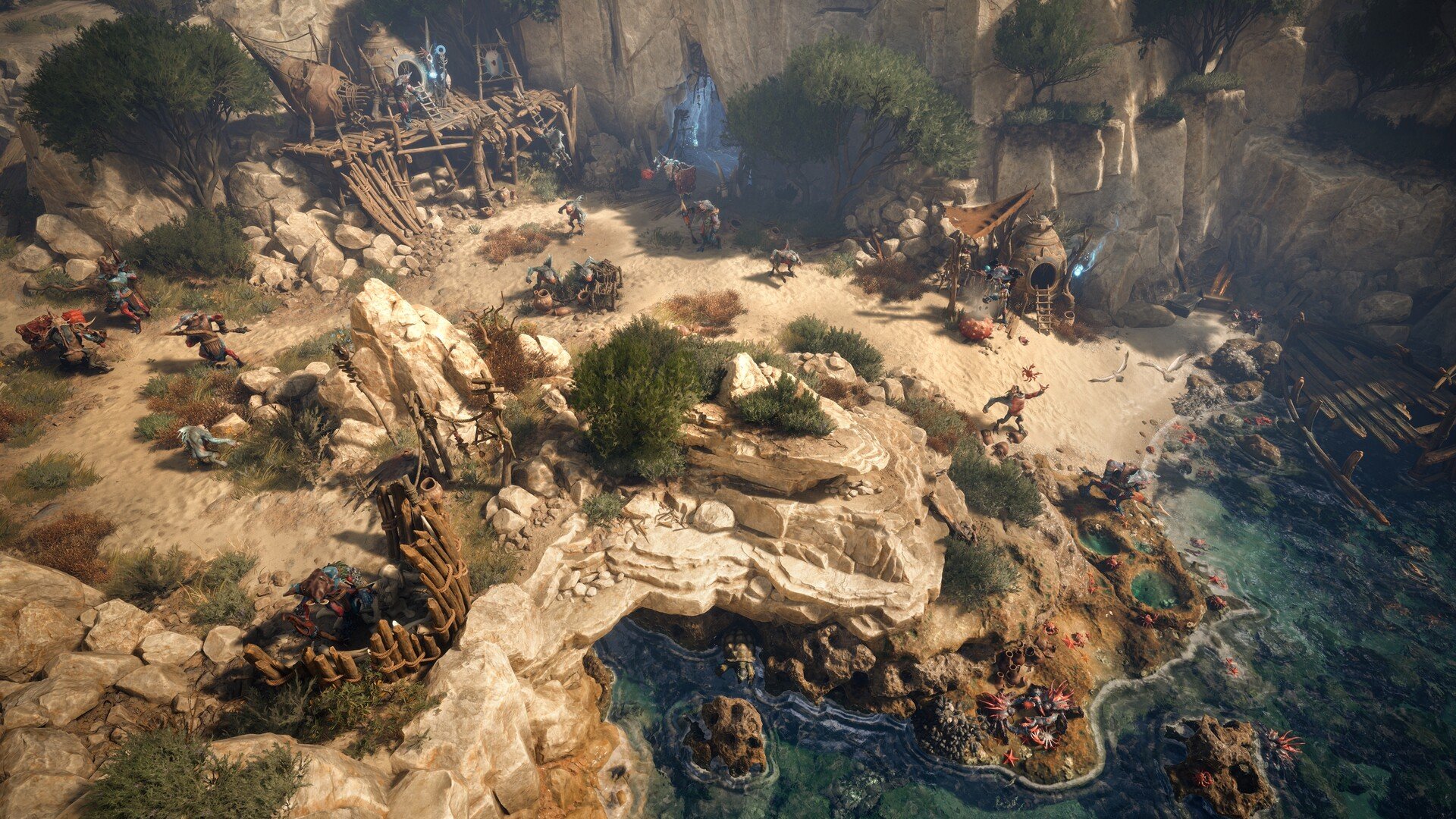
Survivability in Titan Quest 2 relies on layered defenses, including resistances and armor. Below are the key defensive scalers and their roles.
Armor
Reduces Strike and/or Pierce direct physical damage only. Armor does not affect non-physical damage or Damage over Time. Armor types include:
- Light Armor, Medium Armor, Heavy, Ornate, Magos, and Plated Magos: Each has its unique implicits that aid the player in a specific way. It is possible to achieve significant damage reduction for Strike damage without having the same reduction for Pierce damage or vice versa.
Note: Titan Quest 1 players will not see DA (Defense Ability) in Titan Quest 2. Therefore, we have no way currently to scale Critical Strike avoidance. Damage received is now based on individual stats across a multitude of independent mechanics.
Resistance
Resistances reduce both hit damage and the application chance of the corresponding ailment, capped at 60% for both. Damaging ailments cannot have their damage reduced; only the application chance can be reduced.
- Fire, Cold, Lightning, Spirit, Vitality, Poison: Direct damage reduction of a direct attack.
- Thermic Resistance covers Fire and Cold resistances together (typically found on Ornate Armor).
- Resistance to Chilled (Shared with Cold Resistance): Reduces the chance to be Chilled.
- Resistance to Burning (Shared with Fire Resistance): Reduces the chance to be Burned.
- Resistance to Shocked (shared with Lightning Resistance): Reduces the chance to be Shocked.
- Resistance to Plagued (shared with Poison): Reduces the chance to be Plagued.
- Resistance to Bleeding, Staggered, and Weakened are stand-alone resistances and do not share a common resistance. Each of these will reduce the chance of being affected by the respective ailment.
- Resistance to Stunned, Impairment: Reduces the chance to be Stunned or Impaired.
- At this point in the Early Access for Titan Quest 2, there is no mitigation or avoidance of Energy Drain.
Note: This is not an exhaustive list, only what is currently available in the Early Access of Titan Quest 2.
Glancing
By default, Glancing reduces incoming hit damage by 50%, providing baseline defense against all attacks or skills that are not Damage over Time. This can be scaled very high with Heavy Armor and within active and passive skills on various classes.
Energy Barrier
Converts Energy into a protective Energy Barrier that absorbs damage before affecting Life, decaying over time. Barrier is a core defensive skill that enhances your survivability by generating a temporary shield based on your Energy and any free barrier you may have. This shield absorbs all incoming damage before depleting. The cooldown and duration can be influenced by gear with Energy Barrier modifiers or by committing active points into the Core skill, making it a vital tool for sustained combat.
- Two Primary mechanics for Barrier:
- Free Barrier can be obtained through shields and masteries. This will give you additional barrier with no additional energy costs.Barrier Conversion Rate: You will have a set conversion rate of 1:2.3, meaning for every energy used, you will get 2.3 barrier in return.
- You can scale into the Barrier to add several effects, including heal and thorns-type damage.
Dodge
Dodge is a core defensive ability that grants temporary intangibility (i-Frames) for a short duration, allowing you to avoid all damage during the dodge. The i-Frame window lasts approximately 0.25 seconds, with a cooldown scalable by Agility-based (light/medium armor) gear. Timing is critical, as it requires manual activation and has a brief recovery period. Dodge can be scaled with active points, allowing a player to invest to increase dodge’s potency and effectiveness, including extending the i-Frame window.
Unlike Titan Quest 1, there is no passive dodge in Titan Quest 2.
Offensive Mechanics
Offensive mechanics define how you deal damage and interact with enemies in the world. Damaging skills are categorized by type and enhanced by tags. Almost all skills require energy to use.
Skill Types
- Melee: Non-projectile attacks, like sword swings or axe swipes.
- Unarmed: Although not currently scalable, unarmed attacks are possible.
- Ranged: Bow or spear attacks that project over a distance.
- Cast: Spells are not considered attacks.
Offensive Tags
Tags categorize skills for scaling with gear or passives. When looking at gear or passives, it is imperative to see if and how the affected tags on gear or passives can affect your skills. All skills are tagged with their corresponding mastery, which we expect to be scalable later in the Early Access period. The current tags are:
- Active/Sustained: Active skills require manual activation; Sustained skills (e.g., auras) are always active.
- Spell/Attack: Spells are casts; Attacks use weapons. Some Spells can convert to Attacks and vice versa.
- Area: These Skills influence an area of some kind and can be modified with gear or passives.
- Movement: Involves some kind of mobility (e.g., Dash, Blink). Teleport is a related, but separately scaled tag.
- Projectile: Emits a projectile(s), scalable with projectile gear or passives.
- Basic/Exhaust: Basic skills don’t reduce energy regeneration; Exhaust skills reduce it by 75% while actively used. Some skills can be altered to swap the basic or exhaust tag, albeit at the cost of the skill’s functionality.
- Overwhelm/Flow: Buffs with no immediate effect, that are consumed by other skills for enhanced effects.
- Blessing: These abilities share cooldowns with other Blessing Skills.
This is not an exhaustive list, only what is currently available in the Early Access of *Titan Quest 2*.
Primary Attack
Primary Attack is a core offensive skill that serves as your basic combat action, scaling with your weapon directly. By default, it deals 100% your weapon damage as listed on the respective weapon. It can be enhanced with points into the Core skill for various alterations to the skill’s ability. This skill still uses Energy, although typically much less than an active skill from mastery. Primary Attack can be invested in, as all the other Core skills; this investment can make your default attack not only practical, but vitally important to your setup in *Titan Quest 2*.
Rage and Spell Rage
Rage (attack speed, damage) and Spell Rage (cast speed, damage) are scalable via passives. These two buffs can benefit both the offensive and defensive scaling of your character (e.g., Warfare’s Second Wind).
Mechanical interactions to Rage can include Overflow. Rage has a soft cap of 10 stacks; gaining Rage beyond this results in Overflow. Many passives can take advantage of Rage Overflow. When interacting with this Overflow mechanic, both Rage or Spell Rage is treated the same.
By default a player can generate Rage, but Spell Rage must be enabled through the passive tree. There is no benefit to enabling Spell Rage more than once from two separate masteries. Enabling Spell Rage does not disable default Rage. However, one could choose to use the benefits from multiple Spell Rage tree perks typically allocated at 4, 5, 6, 8, 10, and 12. (e.g., Spell Critical Chance and Cast Speed)
Critical and Super Critical
- Critical Damage: Deals 200% damage by default.
- Super Critical: Deals 300% damage when critical chance exceeds 100% (e.g., 150% chance = 50% chance for Super Critical).
- Mechanics: Skills that “Hit” can critically strike. DoT is an ailment and scales only through ailment power, duration, and stacks. By default, ailments do not critically strike.
Conclusion
Mastering Titan Quest 2 mechanics requires understanding attributes, damage types, ailments, resistances, armor, and offensive systems. Use this guide to craft a build that suits your playstyle, whether dodging with Agility, crushing foes with Might, or weaving spells with Knowledge.
Check back often – as the game develops, so will the page and our TQ2 hub.
